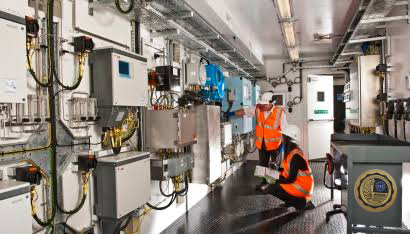Safety of Analyser Houses

Safety Considerations for the Design and Operation of Analyser Houses
This article focuses on hazards arising from release of toxic, asphyxiant or flammable materials inside an analyser house, but it is also important that personnel coming into contact with analyser systems do not suffer injury from additional hazards such as burns, electric shock and cuts from exposed sharp edges.
A number of statutory requirements pertaining to safe design and practices are in force in many countries e.g. the ATEX and PED Directives in Europe. There are also specific standards relating to the safety of analyser systems e.g. IEC 61825 Safety of Analyser Houses. See the applicable standards section at the end of the article for a fuller list of relevant standards and publications.
1. Toxic and Asphyxiant Hazards
When an analyser house system is designed, the toxicity of the materials being handled inside the house must be considered so that under the worst fault conditions i.e. sudden rupture or failure of one of the sample or utility lines entering the analyser house, the legal short-term exposure limits of the substances in the atmosphere are not exceeded. The design must also ensure that under the worst fault conditions that the atmosphere inside the house cannot reach asphyxiating levels.
Analyser houses into which toxic or asphyxiant materials are introduced should therefore be provided with ventilation systems designed to ensure that the relevant occupational exposure limit or dangerous asphyxiant levels for these materials is not exceeded in the general atmosphere inside the house under normal or any likely fault condition.
A warning sign should also be provided on entry doors indicating the possible presence of a toxic or asphyxiating hazard within the house and that personnel should not enter the house without suitable protection if any gas detection alarms or the a ventilation air flow alarm are active based on alarm indications provided externally by the analyser house entry door(s).
It should be noted many flammable materials are also toxic and asphyxiant and will reach the short-term toxic exposure limit or asphyxiant levels long before the lower flammable limit value is reached. Therefore the toxic and asphyxiant hazard from flammable materials entering the analyser house must be taken into consideration when designing the analyser house ventilation systems as well as the flammable hazard.
2. Flammable Vapour Hazards
The same regulations apply to the installation of analysers as with installation of any other electrical equipment in electrically classified hazardous areas and the appropriate relevant legal regulations and standards should be followed for the country in which the equipment is being installed. These documents will define the appropriate area classification inside the analyser house. All equipment used in these housings should be suitable for use in accordance with the area classification.